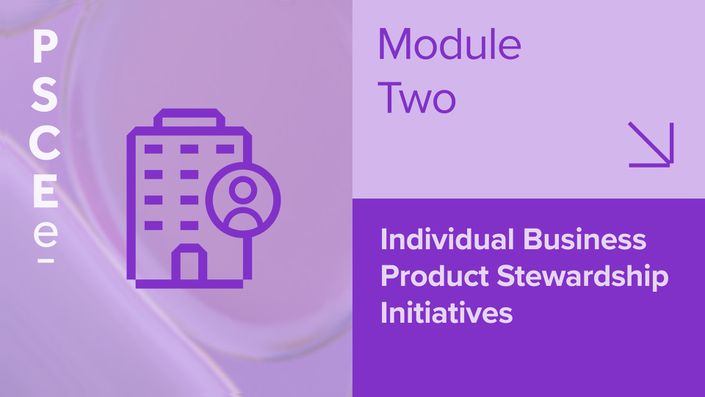Course Outline
Learn about collective schemes and how they operate across the lifecycle through examples which include how the policy and regulatory landscape underpins the type of schemes in Australia.
By completing this module, you will:
- Know what collective Product Stewardship looks like in practice across the product lifecycle.
- Understand the regulatory environment underpinning collective Product Stewardship initiatives in Australia.
- Investigate the impact of free-riders on collective Product Stewardship schemes and uncover strategies to overcome them.
- Examine Product Stewardship in action through best-practice case-studies.
The module uses currently operating Australian examples and recent research to explain concepts and equip you with the knowledge you need to identify your role in Product Stewardship.
Example Curriculum
Welcome
Available in
days
days
after you enroll
Section 1: What is Product Stewardship?
Available in
days
days
after you enroll
- Section 1: Outline
- What is Product Stewardship?
- Product Stewardship and the Circular Economy
- How are Product Stewardship initiatives implemented?
- The Product Stewardship lifecycle
- Types of Product Stewardship actions: Production
- Types of Product Stewardship actions: Consumption
- Types of Product Stewardship actions: Post-Consumption
- Why would an industry choose a collective Product Stewardship approach?
- Collective Product Stewardship schemes
- Section 1: Quiz
Section 2: The regulatory environment for collective Product Stewardship initiatives in Australia
Available in
days
days
after you enroll
- Section 2: Outline (0:22)
- How is Government involved in Product Stewardship?
- The Recycling and Waste Reduction Act 2020 (RAWR Act)
- The Recycling and Waste Reduction Act 2020 (RAWR Act)
- ACCC Authorisation for Collective Product Stewardship
- Collective schemes with ACCC authorisation
- Government accreditation of voluntary, industry-led Product Stewardship initiatives
- Accredited Product Stewardship in Australia
- Section 2: Quiz
Section 3: The ‘Free-riders’ Challenge
Available in
days
days
after you enroll
Section 4: Case Studies
Available in
days
days
after you enroll
- Section 4: Outline
- Case study: Used Oil
- Used Oil: Regulatory basis
- Used Oil: Environmental and economic benefits
- Used Oil: Scheme recommendations
- Case study: National Television and Computer Recycling Scheme (NTCRS)
- NTCRS: Regulatory basis
- NTCRS: Approved Co-Regulatory Arrangements
- NTCRS: Expectations of Co-Regulatory Arrangements
- NTCRS: Environmental and economic benefits
- Case Study: Return and Earn (New South Wales)
- Return and Earn: Roles and responsibilities
- Return and Earn: Scheme reporting
- Return and Earn: Next steps
- Case Study: MobileMuster
- MobileMuster: Objectives
- MobileMuster: Impact and engagement
- Case Study: Tyre Product Stewardship Scheme
- Tyre Product Stewardship Scheme: Key Objectives
- Tyre Stewardship Scheme: Key Performance Indicators
- Tyre Stewardship Scheme: Next Steps
- Case study takeaways
Conclusion
Available in
days
days
after you enroll
You may also be interested in the following courses
Check your inbox to confirm your subscription



